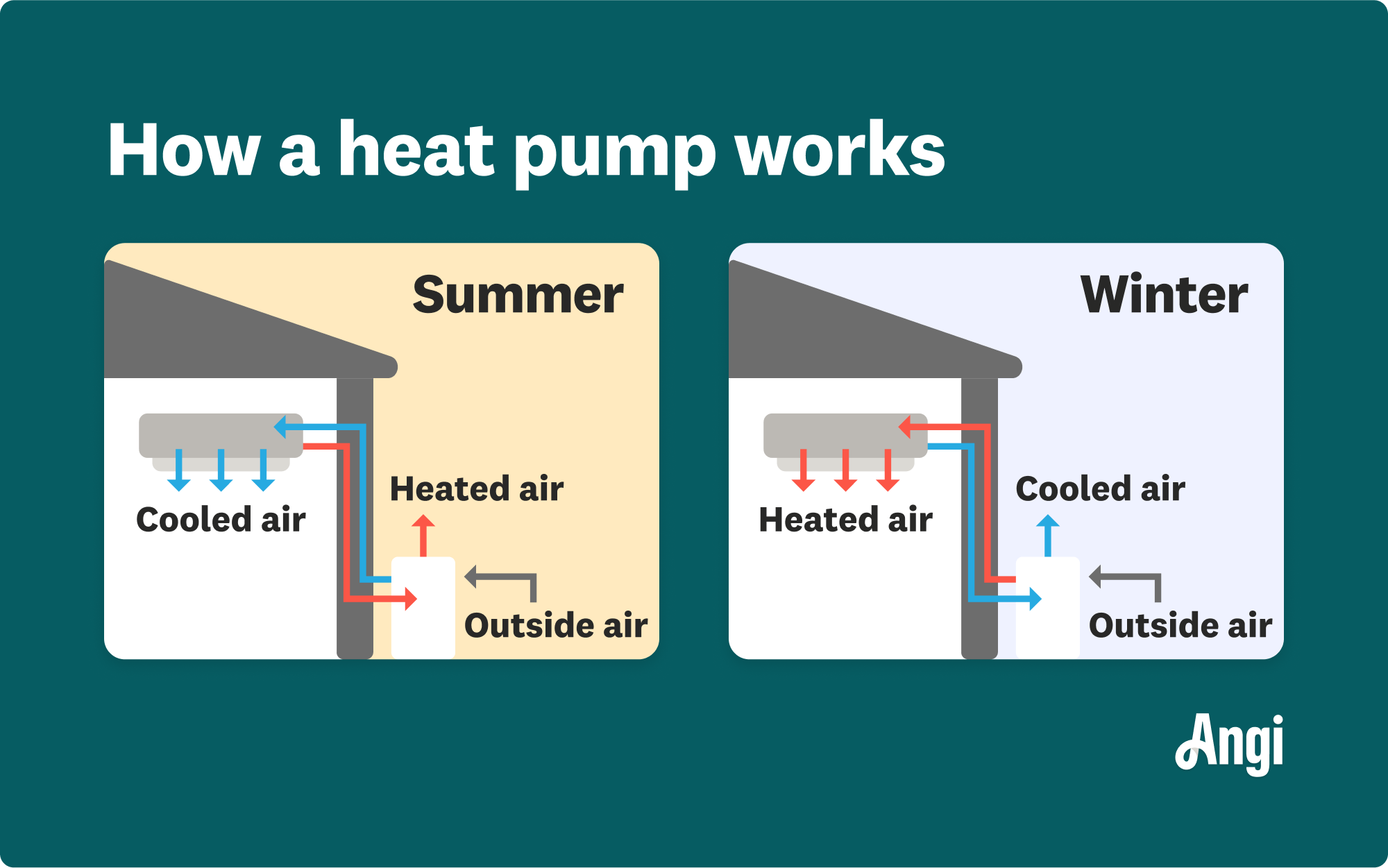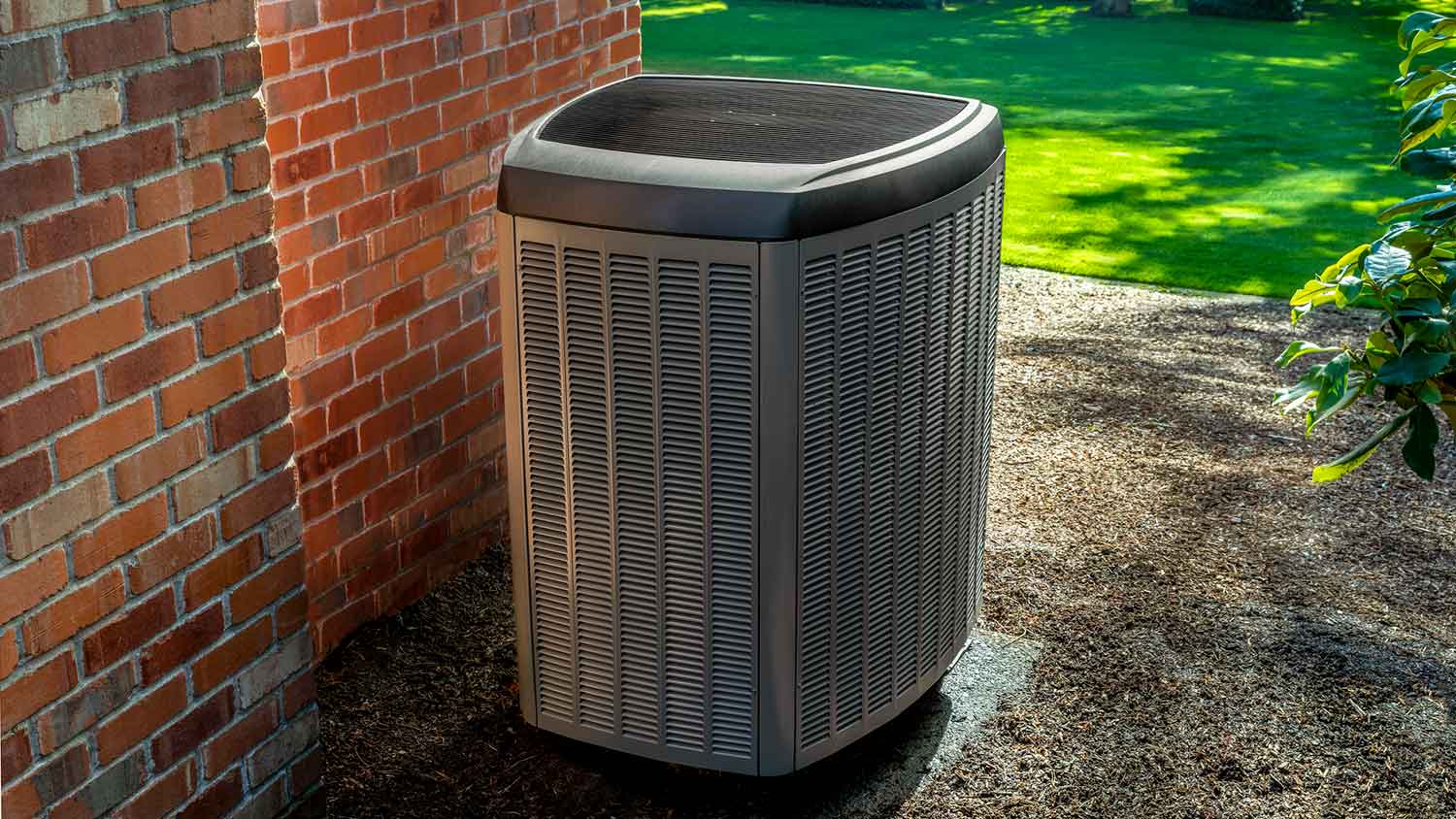
If your furnace is malfunctioning, it could be a faulty control board. Find out what a furnace control board replacement costs for parts, labor, and more.
To duct or not to duct?


A ducted heat pump is usually a better option if you already have ductwork in your home.
Ductless heat pumps require large wall units in each room where you want AC or heat.
Ducted heat pumps tend to use larger condensers outside to provide whole-home cooling and heating.
When it comes to heating and cooling your home, heat pumps offer an all-in-one solution that can work with or without ducts. Ducted systems have long been the go-to, but ductless mini-split systems are gaining popularity for their energy efficiency and versatility. If you’re considering getting one of these heat pumps for your home, it’s important to weigh the pros and cons to find out which will be the better fit. This guide will cover the main differences between a ducted versus ductless heat pump.

Ducted heat pumps use a network of air ducts to distribute climate-controlled air throughout a home, making them ideal for whole-home heating and cooling. Ductless heat pumps, on the other hand, operate without ductwork, using individual indoor units to heat or cool specific rooms.
The key difference lies in the installation process and efficiency: Ducted systems are best for homes with existing ductwork, while ductless heat pumps offer a more energy-efficient solution for homes without ducts or for those seeking room-by-room temperature control.
A ducted heat pump is a heating and cooling system that distributes climate-controlled air through a series of ducts installed throughout a home. In a ducted heat pump system, heat is drawn from the air and conveyed to a central indoor unit, then dispersed throughout your home via a network of ducts. For cooling, the heat is removed from indoors and circulated through the ducts before being expelled outside.
| Pros | Cons |
|---|---|
| Great for whole-home temperature control | Pricey installation |
| Vents can be closed to save energy | Ducts can harbor allergy-inducing dust and airborne particles |
| Minimal visibility | Ducts can leak or become blocked |
Best for:
Larger homes needing consistent temperature control
Homes with existing ductwork
Those who prioritize a less obtrusive appearance
Ducted heat pumps are an efficient solution for whole-home temperature control, making them ideal for maintaining consistent temperatures across multiple rooms. While they don’t offer the same room-by-room temperature control as ductless pumps, it’s still possible to close vents in certain rooms to help save energy.
Installing ducted heat pumps can be very costly, especially in homes without existing ductwork. The process of adding ducts is labor-intensive and may involve significant modifications to the home's structure. Ducts are also vulnerable to leaks and blockages that can reduce the system’s efficiency, leading to higher energy consumption and the need for regular inspections and repairs to maintain optimal performance.

Ductless heat pumps, also known as ductless mini-split systems, offer customized room-by-room temperature control in your home. While they technically do use small ducts to connect to your outdoor unit, you won’t need ducts running through your entire home, so the installation is much less expensive and intrusive. These systems require individual indoor units on the ceiling or wall of a room, as well as an outdoor compressor.
| Pros | Cons |
|---|---|
| Allows zone-specific temperature control | Limited coverage |
| Energy efficient | Uneven temperature control |
| Affordable installation | Conspicuous appearance |
Best for:
Spaces where installing ductwork is not practical or possible
Homes only needing climate control in certain rooms
Ductless heat pumps are ideal for homes without existing ductwork, such as those with radiant panels or space heaters. They are also more affordable than ducted heat pumps, especially in homes without existing ductwork. Ductless systems also boost energy efficiency by allowing individual temperature control by room, so energy is only used where it’s needed.
Since ductless heat pumps don’t work through an internal ductwork system, they require individual units in each room, which some might find visually obtrusive. Coverage can feel uneven, especially when it’s very hot or cold outside, and it might be inconvenient to activate temperature control on demand for different rooms.

Consider this side-by-side comparison to help you decide whether a ducted versus a ductless heat pump will be better for your home.
One of the biggest differences between ductless versus ducted heat pumps is the spatial requirements and overall conspicuous appearance of the system. You can’t see a ducted heat pump working because the air ducts are behind your home’s walls, which many find to be a major benefit.
Ductless heating and cooling systems, on the other hand, use indoor units (called air handlers) that are roughly three feet long by half a foot high. On the plus side, these can be mounted just about anywhere, whether on the ceilings or on the walls.
Ducted heat pump installation ranges between $2,500 and $10,000, while mini-split installation costs around $1,300 to $8,000 per unit. Although these prices are relatively high, they’re still less than the cost of installing a new HVAC system, which typically ranges from $5,000 to $12,500. Mini-splits are typically more affordable overall, depending on how many outdoor and indoor units you need.
Additionally, if you don’t already have ductwork installed in your house, putting in a ducted heat pump system will likely cost upwards of $25,000 or more.
According to the U.S. Department of Energy, ductless mini-split systems help reduce your home’s energy usage by up to 30% because you won’t spend energy heating or cooling the entire house as you would with a ducted system. They create zones that enable you to control the temperature in your most frequently used rooms.
Also, minimal ductwork means there’s no wasted energy. Still, it’s worth noting that both ducted and ductless heat pumps are usually more efficient than something like baseboard heating.
If you follow an annual maintenance schedule, your heat pump should last 10 to 15 years, regardless of whether it’s ducted or ductless. You’ll have some occasional maintenance issues that may require you to repair your heat pump throughout that time. However, if you keep up with regular servicing, you likely won’t need to replace your system for a while, making a heat pump worthwhile.
Installing a mini-split heat pump is very quick and should only take a few hours, as there is only a single duct the installer will need to place. However, if you’re looking to go traditional and install ducted heat pumps, it could take an entire day. You might be looking at several weeks if you’re installing ducts for the system as well.
In general, heat pump installation is a complex project because of the components involved, so you shouldn’t try to DIY this one. Always leave the job to a heat pump installer near you to ensure that your heat pump works efficiently and is installed properly.
Maintenance is relatively simple for both ducted versus ductless heat pumps. Keeping up with basic heat pump maintenance, like cleaning coils, fans, lines, and return registers, will help you get the most from your heat pump’s lifespan. You can also help keep your unit at its best by cleaning your air filter every 4 to 6 weeks and replacing it at least once a year, along with getting an annual professional maintenance visit.
From average costs to expert advice, get all the answers you need to get your job done.

If your furnace is malfunctioning, it could be a faulty control board. Find out what a furnace control board replacement costs for parts, labor, and more.

Factors such as labor and parts impact the final price of repairing a window AC unit. Learn all of the costs associated with window air conditioner repair.

Discover the true window AC unit installation cost to learn about labor, permits, and ways to save on your window AC project.

A whole-house humidifier costs between $400 and $800, but can have an ROI of 40%. Learn if adding this HVAC appliance is worth it for you.

Condensation on air vents suggests something is wrong with your HVAC system. Learn how to stop condensation on air vents through preventive measures.

Wondering who to hire for swamp cooler installation? Learn when to call an HVAC contractor, electrician, or handyperson, and what to expect.